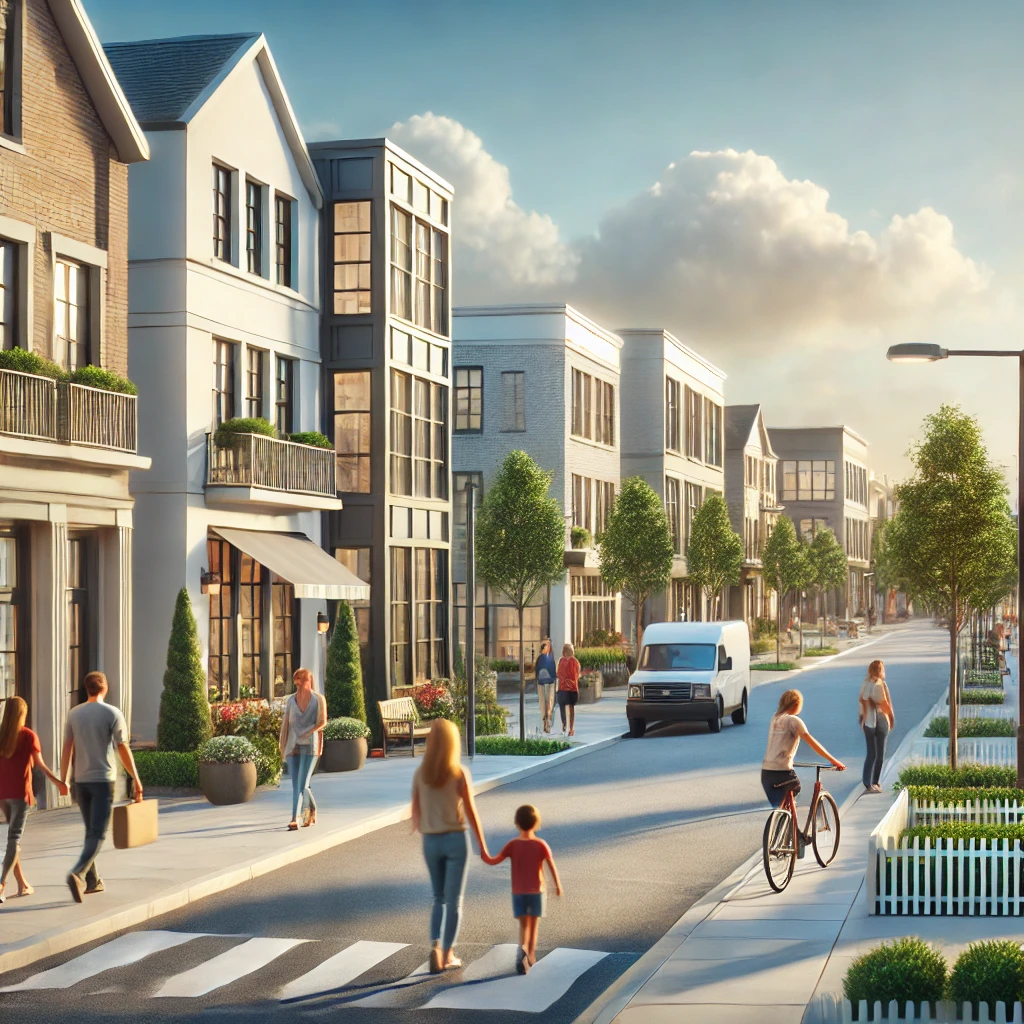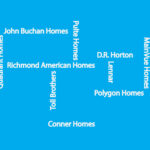In real estate, finding an up-and-coming neighborhood before it becomes the next hot spot is like striking gold. By identifying these areas early, you can buy properties at lower prices and watch your investment grow as the neighborhood gains popularity. In a rapidly changing market like Seattle, this strategy can lead to significant returns—if you know what to look for.
This guide will show you how to identify Seattle’s next hidden gems. It’s not just about buying in the cheapest areas; it’s about understanding the broader trends—social, economic, and infrastructural—that drive neighborhood growth and appreciating value. If you’re ready to spot opportunities that other investors are missing, this is the insider’s guide you need.
1. Look for Public and Private Investment
One of the clearest signs of an up-and-coming neighborhood is a significant amount of public and private investment in infrastructure and development. Governments and businesses typically invest in areas where they anticipate growth, which can transform underdeveloped neighborhoods into real estate hot spots.
- Public Infrastructure Projects: Keep an eye on areas that are slated for new public transit lines, highway expansions, or upgraded public amenities like parks and schools. In Seattle, expansions of the Sound Transit Light Rail system have already boosted the appeal of neighborhoods like Beacon Hill and Columbia City, and future expansions are likely to spur growth in additional areas.
- Private Development: When private developers start breaking ground on mixed-use projects, luxury apartments, or office spaces, it’s a strong indicator that they expect the neighborhood to thrive. New shopping centers, co-working spaces, and trendy restaurants are often the first signs of revitalization.
Pro Tip: Areas like Northgate, which is seeing significant investment due to the expansion of the light rail and redevelopment of the Northgate Mall into a mixed-use complex, are prime candidates for growth. Public and private dollars are flowing in, making it a strong bet for future real estate appreciation.
2. Follow the Artists
Artists are often the first wave of gentrification in underdeveloped areas. They move into neighborhoods with lower rents, creating vibrant communities that attract cafes, galleries, and eventually, wealthier buyers. While this may not seem like a concrete investment strategy, it’s a well-documented pattern in cities like New York and San Francisco—and it’s happening in Seattle too.
- Creative Hubs: Look for neighborhoods where creative spaces, art galleries, and co-working studios are popping up. These tend to be areas where rents are still low, but the creative energy is drawing attention.
- Example: Neighborhoods like Georgetown and South Park have become artistic enclaves in recent years, attracting independent businesses and young professionals. As these areas gain more attention, property values are likely to rise.
Pro Insight: Once the artists arrive, boutique cafes, local breweries, and startup companies usually follow, setting the stage for rapid neighborhood transformation.
3. Monitor Rent Increases and Vacancy Rates
Tracking changes in rental prices and vacancy rates is a key way to gauge whether a neighborhood is on the rise. A sharp increase in rental prices often signals that demand is growing faster than supply, which can lead to property value increases as more people move into the area.
- Rising Rents: Use platforms like Zillow or Rentometer to track rental trends in neighborhoods. Areas where rent is increasing rapidly, but home prices are still relatively low, often indicate strong future appreciation potential. Investors can take advantage of this by purchasing properties before values catch up to the rental demand.
- Lower Vacancy Rates: Pay attention to neighborhoods where vacancy rates are dropping. This is often a sign that more people are moving into the area, increasing demand for housing. In turn, this demand pushes up both rent and property values.
Pro Tip: Neighborhoods like White Center and Highland Park have seen significant rent increases over the past few years, yet property prices remain relatively affordable compared to Seattle’s core neighborhoods. These are prime areas for flipping or renting out properties as demand continues to rise.
4. Pay Attention to New Businesses and Amenities
When big-box retailers, grocery stores, and trendy cafes start moving into a neighborhood, it’s a strong signal that the area is about to experience growth. Anchor businesses like Starbucks, Whole Foods, or even local farmer’s markets show confidence in the area’s future, which usually means property values will follow.
- Retail and Commercial Development: Neighborhoods seeing new commercial activity—whether it’s national chains or independent businesses—are typically on the verge of transformation. Developers and business owners conduct their own market research before choosing where to invest, so their moves can be a good indicator of where a neighborhood is heading.
- Cafes and Restaurants: New cafes and restaurants signal increased foot traffic and growing interest from both residents and visitors. These establishments often cater to young professionals, another sign that the neighborhood is attracting an economically vibrant demographic.
Pro Insight: Take note of areas like Central District, where new restaurants, shops, and local businesses have been popping up in response to growing demand. These businesses often precede rapid property appreciation, making it an ideal place to invest.
5. Check Crime Rates—Are They Dropping?
A declining crime rate is often one of the most reliable indicators of a neighborhood on the rise. As neighborhoods become safer, they tend to attract more families, young professionals, and investors, which in turn drives up home values.
- Crime Trends: Use tools like NeighborhoodScout or local police department websites to monitor crime trends in specific areas. A neighborhood that’s seeing a consistent drop in crime rates is likely becoming more desirable to buyers and renters.
- Police and Community Investment: Look for areas where the local government or police department is making efforts to improve safety, such as adding more patrols or investing in community programs. These efforts often go hand-in-hand with neighborhood revitalization and increased property values.
Pro Insight: Neighborhoods like Rainier Valley have historically had higher crime rates, but recent investments in community policing and public safety have led to significant improvements, making it a more attractive option for homebuyers and investors alike.
6. Explore Transit Developments
In Seattle, public transportation is becoming an increasingly important factor in real estate investment. Areas that are well-connected to public transit—especially light rail—tend to see faster appreciation as they become more desirable for commuters.
- Proximity to Light Rail and Bus Lines: Neighborhoods with access to the Sound Transit Light Rail or rapid bus lines are especially attractive to buyers who work in the city but want to live further out. As Seattle’s light rail system expands, neighborhoods along these transit lines are seeing higher property values and lower vacancy rates.
- Future Transit Plans: Look beyond the current transit map and explore planned expansions. The Sound Transit 3 expansion will eventually extend light rail access to areas like Northgate, Shoreline, and even further north to Lynnwood, making these neighborhoods highly attractive to investors who want to get in early.
Pro Insight: Areas along future transit lines, such as Mountlake Terrace or Lynnwood, are already experiencing increased interest from investors. These neighborhoods are projected to see a sharp rise in property values once transit expansion is complete.
7. Keep an Eye on Zoning Changes
Zoning laws have a significant impact on neighborhood growth. Changes in zoning that allow for higher-density housing or mixed-use developments often signal that a neighborhood is preparing for significant growth.
- Rezoning for Multi-Family Housing: When a city rezones an area to allow for multi-family housing, it’s usually a sign that they’re expecting population growth and increased demand for housing. This can lead to an influx of new residents, which in turn drives property values up.
- Commercial Zoning: Neighborhoods that are rezoned for commercial or mixed-use development are often on the verge of becoming economic hubs. This means more jobs, more businesses, and a higher demand for housing.
Pro Tip: The City of Seattle regularly updates its zoning laws, and areas like Ballard and Fremont have seen rezoning for mixed-use developments in recent years. Keep an eye on zoning changes in the city’s comprehensive plan for insight into which neighborhoods are about to experience rapid growth.
Conclusion
Finding an up-and-coming neighborhood is all about understanding the signs—from public and private investment to rental trends and zoning changes. By staying ahead of these trends, you can identify the next hot neighborhoods in Seattle before the rest of the market catches on. Whether you’re looking to flip houses, invest in rental properties, or simply secure a home with long-term appreciation potential, these strategies will help you uncover the hidden gems that offer both immediate and future value.
In Seattle’s competitive real estate market, success lies in your ability to see the potential in neighborhoods that are just beginning to blossom. With the right research and a keen eye for opportunity, you can invest in areas that will reward you for years to come.





